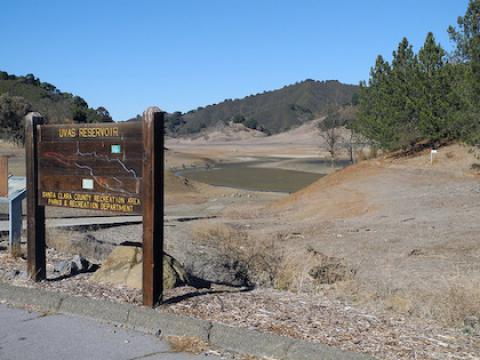Walmart is the latest company found to be sourcing its bottled water from drought-stricken California, as state residents push for greater regulation of the bottling industry.
Starbucks was moved to alter its bottling practices in California last week and Mount Shasta community members are fighting the opening of a major bottling plant by California-based company Crystal Geyser. Then on Friday, an investigation by CBS13 in Sacramento found that Walmart’s bottled water comes from the Sacramento municipal water supply.
The revelations come as state residents face increased water use limits during the fourth year of drought in the state. State governor Jerry Brown signed an executive order last week that calls for a 25% urban water reduction across the state.
“It’s only logical that as the governor has asked all Californians to reduce their water consumption that he holds extractive industries like bottled water companies to the same standard, yet he hasn’t asked anything of them,” said Adam Scow, the California director of Food & Water Watch, which is calling for a moratorium on bottling water.
There is little oversight or monitoring of bottling plants in the state, which are also operated by major corporations including Nestle, Coca-Cola and Pepsi.
About 1% of state water is used in industry, and the bottling industry represents an even smaller fraction of that, according to the US Geological Survey.
Walmart, like other large companies, draws water from municipal supplies to keep costs down. A Walmart spokesperson said that the company is “very concerned” about how the drought is affecting its customers and associates.
“We share those concerns and are tracking it closely,” the spokesperson said. “Our commitment to sustainability includes efforts to minimize water use in our facilities. We have and continue to work with our suppliers to act responsibly while meeting the needs of customers who count on us across California.”
Starbucks was pushed to stop sourcing its Ethos bottled water from California after Mother Jones discovered that it had been drawing water from Placer County. Starbucks said it would move production to a supplier in Pennsylvania over the next six months. It is also looking for alternative suppliers for its west coast distribution.
“At the end of the day, bottling the public’s water for private profit is not in the public interest,” said Scow.
He said the practice has a negative effect on local watersheds, that the oil and energy used to make plastic bottles and transport them across the nation are harmful to the environment and that there is a huge waste problem with plastic bottle disposal.
Crystal Geyser, a bottled water company headquartered in San Francisco, announced it is opening a new plant near Mount Shasta, which feeds water into the Sacramento River. The company does not need to obtain a permit to draw the water and there is not a requirement to conduct an environmental impact report.
Raven Stevens, community liaison for the Gateway Neighborhood Association, told the San Francisco Chronicle that the top concern is that there is little regulation for bottling plants.
“Crystal Geyser in one day plans to pump more water than any three of my neighbors will use in an entire year,” Stevens said. “The entire state is under a 25% cut, farmers are letting fields go fallow and we don’t have one piece of legislation regulating water bottling.”
[Amanda Holpuch is a reporter at the Guardian]


Spread the word